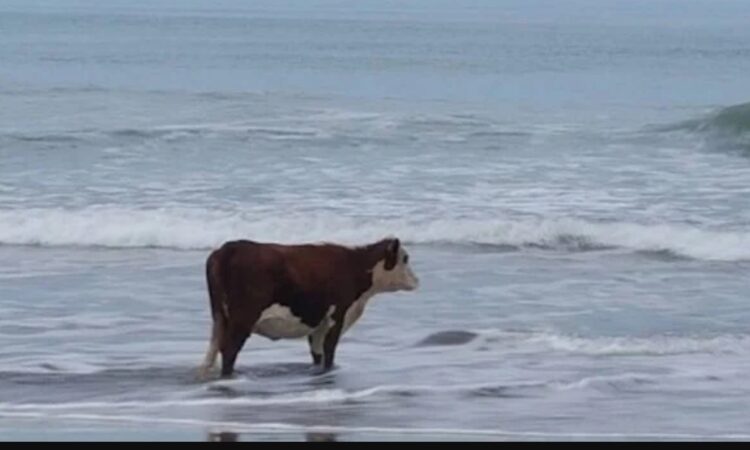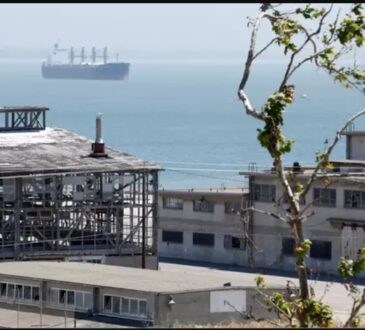A Dutch Couple Is So Alarmed Over “Climate Change” They Built A Farm Placing Cows In The Middle Of The Sea

This is a story that could have originated from the Babylon Bee. A Dutch couple believes the “climate change” threat is so severe that that the entire future of farming rests with cows floating on top of the sea.
According to the Guardian, Peter and Minke van Wingerden have constructed a micro diary called Floating Farm. This farm is located in the port of Rotterdam and houses 40 cows.
Here are the relevant parts of the story from the Guardian:
Samuel L Jackson can have his snakes on a plane. Peter and Minke van Wingerden have concocted something even wilder: a herd of cows floating on the sea.
The Dutch husband-and-wife team’s experiment on sustainable agriculture, a hi-tech micro-dairy called Floating Farm, can be found bobbing in the port of Rotterdam. The modernist structure houses 40 Maas-Rijn-Ijssel cows, who collectively produce some 200 gallons (757 liters) of milk a day.
In addition to helping nourish the local community, the waterborne farm is playing a part in the global conversation about how the climate crisis is pushing farmers to reconsider how – and where – they produce food
For their part, the Van Wingerdens are betting on a method that does without the land altogether.
The Van Wingerdens’ experimental farm floats on pontoons, rising and falling with the tides (which, in Rotterdam, fluctuate about eight feet each day). The rubber-floored barn occupying the top level of the structure is where the cows are robotically milked, mucked and fed (they can also walk down a gangplank to a waterside patch of pasture).
The middle level is where the milk is processed into butter, yogurt and other dairy products. It is on this level where rain and desalinated seawater are purified for the cows’ consumption.
The animals’ manure, meanwhile, is processed for fertilizer that is used on local soccer fields – whose grass clippings return as feed. At the bottom of the structure is a naturally cool space used for ripening up to 1,000 wheels of gouda-style cheese at a time, some flavored with curry, others with wild garlic – all for sale through the farm shop. In other words, it’s a circular system that is self-sustaining – not just ecologically, but economically.
The Van Wingerdens’ model is ripe for reproduction – which is exactly what the Floating Farm’s team of 14 are working on now. Plans are in the works for a floating vegetable farm to move into the space next to the current Floating Farm. Permit applications are also out for similar structures in Dubai, Singapore and the Dutch cities of Haarlem and Arnhem.
The biggest obstacles he sees ahead are not financial or physical, but rather political and administrative. “As a world, we are in such a need to find solutions for the upcoming 30 years,” Peter says. “One of the biggest challenges we come across worldwide is regulations.
Actually, there a few other obstacles to their dream of multiple farms at sea. The first challenge is almost no other farmers have the financial resources or background to build and try to sustain farms in the middle of water. Honestly, it is highly questionable whether the van Wingerdens’ will be able to maintain their momentum long-term.
The second issue is simply more basic: when will cows learn how swim? Would not take much for a few cows to wander off the “farm” and drown in the sea or ocean. Same goes for chickens, goats, and other animals.
The third obstacle involves the weather. Several places in the world deal with hurricanes and typhoons on regular basis. How is any farm capable surviving a Hurricane Maria-type storm in the middle of the water?
This whole experiment is just something for climate alarmists with too much time on their hands. People have farmed on land since the beginning of time and this will not change.




